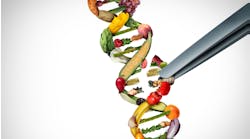At its best, the “clean label” movement has fostered health- and sustainability-conscious consumption, corporate transparency and considerable product innovation, many food industry experts agree. More and more consumers today, as a result, eat a wider variety of fresh fruits and vegetables and high-protein foods, read Nutrition Facts panels and ingredient decks, and try to reduce their sugar and salt intake—a boon to public health in a country with a high prevalence of adult obesity and dietary-related chronic diseases such as Type 2 diabetes and cardiovascular disease.
But misconceptions underpin the movement as well, most notably the fear of chemical-sounding ingredients and additives that are unfamiliar to lay consumers but well-understood by food scientists. As the food processing industry rushes to reformulate products to appease consumers, a number of university-based scientists are raising concerns that removing or replacing time-tested preservatives could compromise food safety.
In addition, some nutritionists worry that misguided anxiety over an ever-growing list of demonized chemicals distracts consumers from the importance of a balanced, nutrient-rich diet. In fact, food manufacturers have even removed vitamins and minerals from their products to “clean up” labels.
“I do see both pros and cons to the clean label movement. Ultimately, of course, what we want is a safe and nutritious food supply,” says Debbie Petitpain, spokeswoman for the Academy of Nutrition and Dietetics in Chicago. “The flip side is that there is a movement that is clearly not going away in which consumers are interested in understanding what’s in the food that they’re eating. And that’s not a bad thing.”
[pullquote]
Free-from frenzy
In his 2008 book "In Defense of Food: An Eater’s Manifesto," activist Michael Pollan helped catalyze the frenzy for free-from foods with his warning not to eat anything containing unpronounceable substances that one’s grandmother wouldn’t recognize. During the past decade, bloggers such as “Food Babe” Vani Hari have further fanned consumer fears by condemning multisyllabic food additives in processed food.
“There’s a lot of evidence that consumers find chemical-sounding words somewhat objectionable,” notes Jayson Lusk, who heads the department of agricultural economics at Purdue University, West Lafayette, Ind. The challenge, he says, is that industry efforts to be more transparent and comply with FDA ingredient labeling requirements have resulted in long lists of scientific names for substances in food.
“You’ll have an ingredient in a list like ‘cobalamin’ and consumers will think it’s really scary, but it’s just vitamin B12,” observes Lusk, the author of "The Food Police: A Well-Fed Manifesto About the Politics of Your Plate" (published in 2013). “Consumers think, ‘Don’t eat anything your grandmother couldn’t pronounce.’ But the reality is that sometimes we’re using much more precise words than your grandmother would’ve used to explain exactly what’s in the food.”
Outspoken food industry critic Marion Nestle counters that such views exaggerate the public’s ignorance of science. “Most people know the difference between vitamins and unnecessary and potentially harmful chemicals added to food,” contends the retired former professor of nutrition, food studies and public health at New York University. “Most non-nutrient food chemicals are added to highly processed foods for purposes of cosmetics (colors), covering up the loss in flavor that occurs with processing, or shelf life. Most people would be better off eating less of highly processed foods.”
Noting that healthful diets can include processed as well as fresh food, Petitpain argues that food manufacturers need to do more to educate consumers about why particular ingredients and additives are used in specific food products.
Can’t do without effective antimicrobials
To remain competitive, many food processors, meanwhile, have been busy simplifying ingredient decks and trying to eliminate or reduce synthetic food constituents, often replacing them with naturally derived counterparts.
Michael Doyle, retired professor of food microbiology and former director of the University of Georgia Center for Food Safety, acknowledges that not all the additives traditionally used by the food industry are absolutely necessary, but they do serve a purpose. “Some are for functionality. Some are for stability. Some are for color,” he points out.
Doyle has many concerns about the removal and replacement of tried-and-true, proven-safe antimicrobial preservatives such as potassium sorbate and sodium benzoate.
“Sorbate and benzoate have been used for years as antimicrobial preservatives, not just for preventing mold and yeast growth,” he explains. “Sorbate is added, for example, to certain foods like processed cheese that’s vacuum-packaged because it helps prevent Clostridium botulinum from growing and producing toxins.”
Sorbate and benzoate are also highly effective against Listeria, Salmonella and other harmful microbes, adds Doyle, co-author of “The Challenges of Eliminating or Substituting Antimicrobial Preservatives in Foods,” an article published in Annual Review of Food Science and Technology in February 2017.
In fact, Doyle emphasizes, “There have been several examples throughout the years where foods have become toxic or pathogens have grown because the antimicrobials have been removed [from product formulations].”
Some of the substitutes for standard antimicrobials are less potent and reliable, according to Doyle. He notes that vinegar, which contains acetic acid, is commonly used today as an alternative preservative.
“The acetic acid is what controls the pathogens, but it’s not nearly as effective as sorbate or benzoate in terms of broad activity against spoilage organisms and Salmonella and Listeria.”
Clean-label ingredient producers such as Amsterdam-based Corbion and Kemin Industries in Des Moines, Iowa, insist that their vinegar-based antimicrobials are highly effective, however.
And because “clean label,” unlike “organic,” has not been defined by USDA or the FDA, it would be much more difficult to conduct a comprehensive research study on whether clean label formulations and production methods have a higher relative risk for foodborne illness than their conventional counterparts.
One study that has attracted the notice of food scientists and microbiologists, though, indicates a positive, statistically significant correlation between the number of farmers’ markets per million individuals and the number per million of total outbreaks and cases of foodborne illness. Published in the "American Journal of Agricultural Economics" in April 2018, the article Farmers Markets and Food-Borne Illness compares data on farmers’ markets by state from the USDA’s Agricultural Marketing Service and Farmers Markets Directory for the years 2004, 2006 and 2008-2013 with data from the CDC’s Foodborne Outbreak Online Database (FOOD) for the same years.
“The correlation between farmers’ markets and foodborne illness just persisted in whatever I did with the data,” says the study’s lead author Marc Bellemare, an associate professor of applied economics at the University of Minnesota. The correlation is most robust between farmers’ markets and outbreaks and cases of norovirus, followed by Campylobacter jejuni.
Receiving his research grant from University of Minnesota’s Healthy Foods, Healthy Lives Institute (www.hfhl.umn.edu), Bellemare initially aimed to investigate the accuracy of a common assumption that consumers make today “that local organic food is healthier.” Although farmers’ markets don’t just sell organic food, “I used that measure because I couldn’t find a good measure of organic consumption,” Bellemare explains.
While not adding to research on the safety of organic foods, Bellemare’s study does call into question consumers’ health assumptions about the “farm-to-table” trend, another aspect of the broader clean label movement.
No discussion of this movement can fail to take note of the growing consumer concern over genetically modified organisms (GMOs). Many consumers now expect clean label food to be GMO-free.
In a May 2016 report “Genetically Engineered Crops: Experiences and Prospects,” the National Academy of Sciences, Engineering and Medicine confirmed (again) that “the study committee found no substantiated evidence of a difference in risks to human health between currently commercialized genetically engineered (GE) crops and conventionally bred crops, nor did it find conclusive cause-and-effect evidence of environmental problems from the GE crops.”
Although there is no evidence that non-GMO crops are more likely to harbor foodborne pathogens, Wayne Parrott, a professor of crop science at the University of Georgia, has commented to the media on the detrimental removal of vitamins from certain breakfast cereals reformulated to be Non-GMO Project Verified.
Difficult to disabuse
In "The Food Police," a hard-hitting critique of those who attack “Big Food” without any knowledge of agribusiness or food science, Lusk wrote, “The progressive food movement will not meaningfully help the poor or the environment or public health: It is a way for a modern generation far removed from the farm to give meaning to their lives in how they define themselves and others through food.”
Because so many millennial and younger adult consumers today link their food choices with their moral values, not just long-term health, the food industry faces an uphill battle when it comes to convincing people that conventional food additives such as synthetic preservatives, as well as biotechnological innovations, help ensure better-for-you and safer food.
Bellemare, who wrote an op-ed piece in The New York Times about his farmers’ market research, points out that while he received favorable feedback from many readers, a few were “pretty virulent in their denunciation of what I had written as being complete garbage,” as he puts it.
“We live in an era where the worst thing that can happen to an individual is to get told that what you believe is fundamentally mistaken,” Bellemare explains. “It is in the spirit of the times that people don’t like to get told they are wrong about something. They are very ego-invested in what they believe.”
Nevertheless, some food scientists and other food safety experts are trying to educate the public and take on “chemophobic” activists, as Lusk calls them. In January 2015, for example, several members of the Institute of Food Technologists Student Assn. wrote “An Open Letter to the Food Babe,” in which they called out her oversimplification of science.
“You have claimed to appreciate the work of food and nutritional scientists, but the language in your posts is insulting and attacks our profession — without really understanding what we do," they wrote. "In a time when sound science is needed more than ever, why do you so openly choose to ignore and vilify it?”
In his second book for the lay public, "Unnaturally Delicious: How Science and Technology Are Serving Up Super Foods to Save the World," Lusk extols the benefits of biotechnological innovation and directly addresses foodborne illness, which afflicts more than 15 percent of Americans each year, resulting in 3,000 deaths and 128,000 hospitalizations, according to the CDC. “The modern-day quest for naturalness in food sometimes runs directly at odds with food safety,” he wrote.
Besides educating consumers, the food industry needs to understand the importance of corporate social responsibility in gaining the trust of millennials and Generation Z, Petitpain emphasizes. “A company’s reputation is reflected all the way down into minuscule details of a particular product,” she says.
So, for example, if consumers admire a food manufacturer’s fair trade and hiring policies, they might be more inclined to believe that its product ingredients are safe and healthful.
As Petitpain explains, “This movement is an opportunity for companies to look holistically at their corporate responsibility plans and examine how effectively they’re communicating their values and their vision of transparency.”


